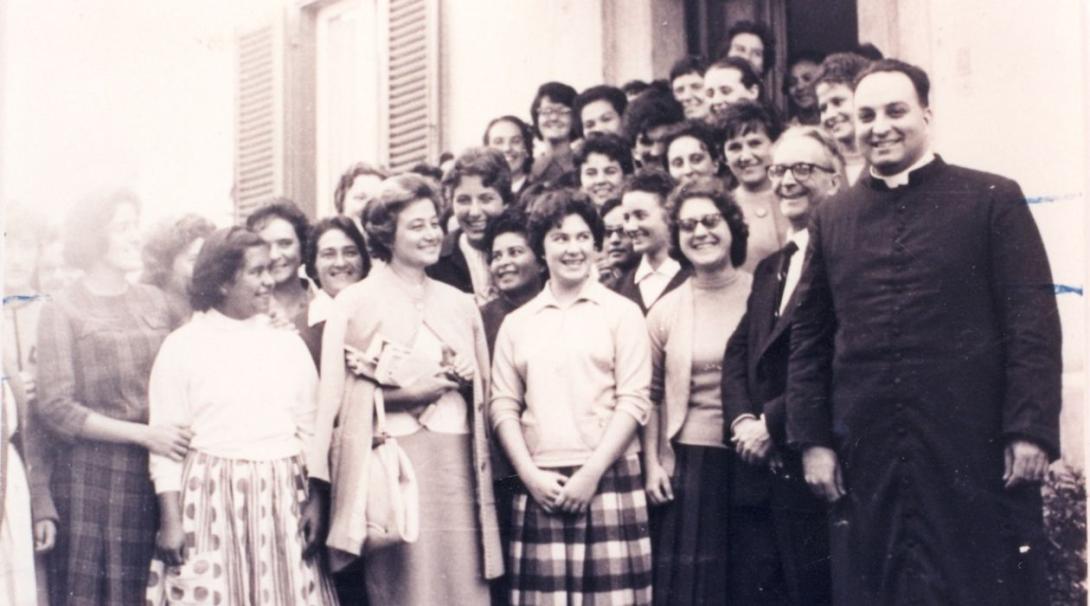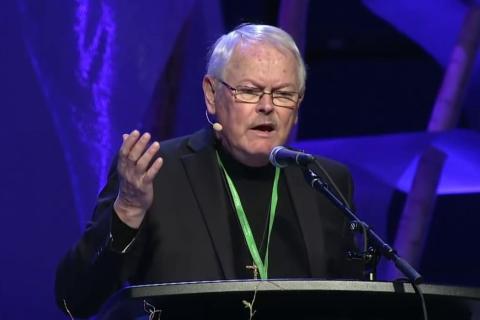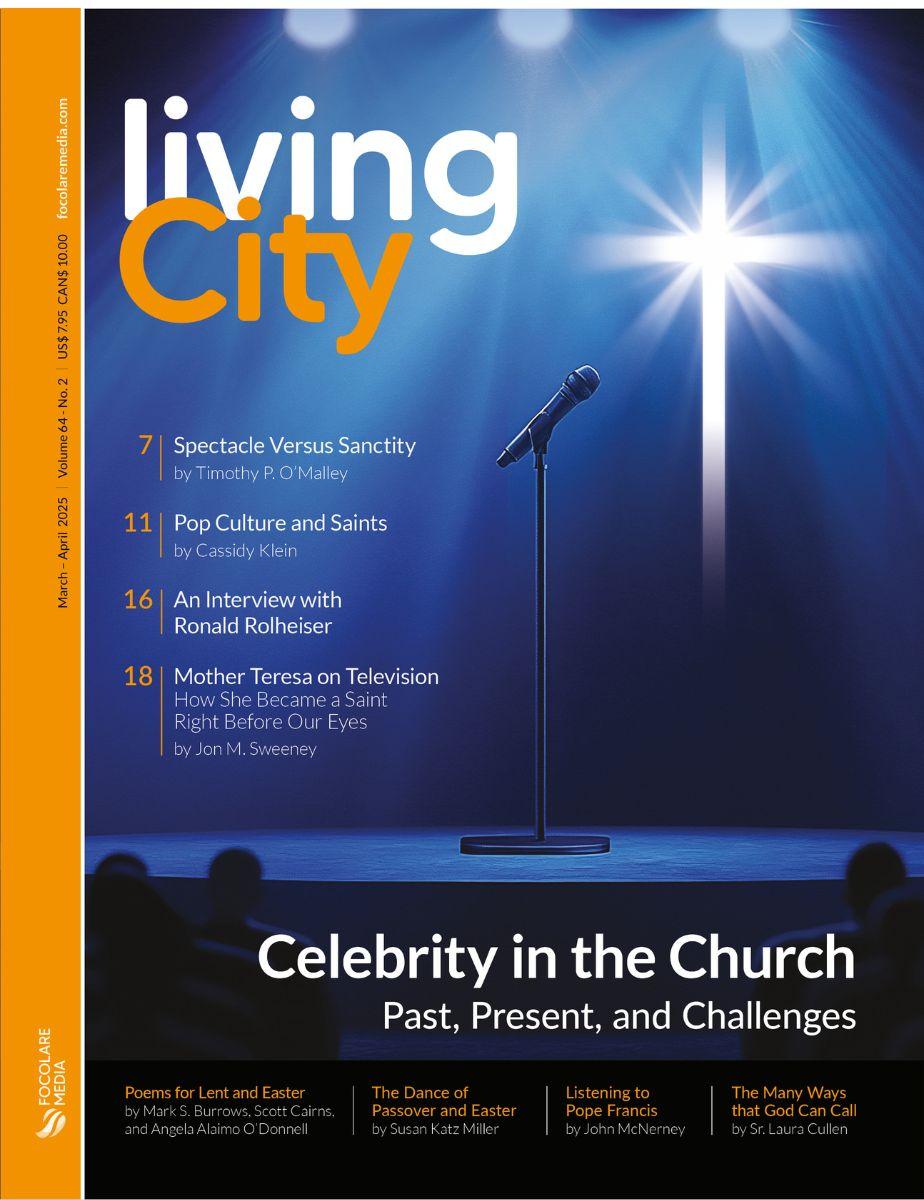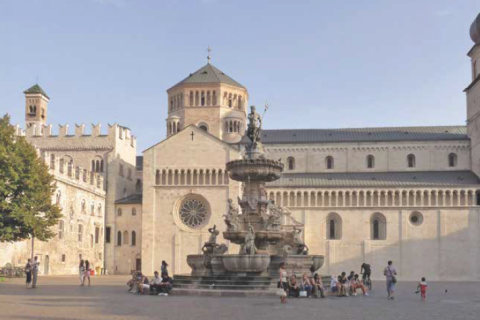The birth of the first Focolare, a visit to Rome, and meeting Igino Giordani

Chiara Lubich, Igino Giordani and friends
“What will you speak about?” “About love,” she replied. “And what is love?” the priest continued.
“Jesus crucified.”
The young woman playing the lead role in this dialogue had just turned 20. She had chosen to call herself Chiara, like her great spiritual friend who had lived in Assisi many centuries earlier.
She had accepted the invitation to speak periodically in a hall in the center of Trent named after Cardinal Guglielmo Massaia. Before beginning, Chiara spent some time in front of Jesus in the Eucharist, continuously repeating, “You are everything, I am nothing.”
Participants at these meetings were mainly young women who were intrigued by the speaker. She was a woman who was young, a lay person and who was speaking about God. And she didn’t have any particular devotional or pious emphasis. She spoke of a God who was always available, without denying God’s transcendence.
This marked the beginning of what Chiara Lubich herself described as “a coming and going of hearts.” Many of those present remained in the network that was coming together by speaking of God in that way, which then led them to follow him to the point of giving their lives completely for him. Around Chiara there gathered an early group of young women who wanted to share in this experience, which was “completely, exclusively Gospel.”
In the meantime, the war was dragging Trent into the depths of destruction and death. Hundreds of people were forced to leave their homes when they were damaged by the bombs.
This happened to Chiara, too. Someone let her know about a little apartment on the outskirts of the city, close to a Capuchin church. Together with a few of her friends, Chiara went to live in the little house, which instantly became the founding experience of a life that Chiara had envisioned intuitively many years earlier in Loreto [where there is an ancient little house preserved in a basilica, believed to be the house of Nazareth, where Mary, Joseph and Jesus lived as a family], although she had not yet clearly understood what it meant.
It was life with “Jesus in the midst 24 hours a day.” This was the birth of the focolare, whose goal was to reproduce, as much as possible, the human and divine reality of the house of Nazareth.
The key words that God taught Chiara and her friends were: “mutual love,” which “obtained” (as a gift from God) the presence of Jesus among them (see Mt 18:20); “unity,” God’s supreme gift for us; “Jesus forsaken,” in his cry of abandonment to God (see Mk 15:34), the climax and synthesis of every suffering and therefore an indispensable route to love that brings about unity.
And the poor: God presented himself under their humble appearance, in their destitution and degradation. Chiara understood that their love for the poor was the sign of their love for God. One had to love everyone, and not leave aside the poor.
The young women did all they could for them in a thousand different ways, giving whatever they had, even what they themselves needed.
They experienced how “God wanted it” because he answered with “providence” that arrived. In fact the little house became the setting for a coming and going of food, clothing, money (just a little) which would meet the different needs of the people. The more they gave to the poor, the more other things arrived. “Give and it will be given to you,” said Jesus in the Gospel (Lk 6:38), and that is exactly what happened.
“And what is love?” the priest continued. “Jesus crucified.”
They hadn’t decided to come together so as to help the poor, but by doing so the Christian community was revived around them.
It wasn’t long before some young men joined them, attracted by the same Ideal, and a little community was formed.
“Within a few months there were already 500 of us,” Chiara later recalled. They were lay people, married people, religious, people who were consecrated to God. A people guided by the words of Jesus, summed up in “Love one another as I have loved you” (Jn 13:34); “No one has a greater love than the one who gives his life for his friends” (Jn 15:13); and “My God, my God, why have you forsaken me?” (Mk 15:34).
In October 1945, on the feast day of Christ the King, the psalm said, “Ask and I will give you all the nations for your inheritance” (Ps 2:8). Chiara and early friends asked for this.
On May 1, 1947, Archbishop of Trent Carlo de Ferrari approved some rules that made the existence of the “Focolare of Unity” official.
Quite soon Trent wasn’t big enough. When the war was over, God’s providence — through the inevitable misunderstandings that had arisen in Trent towards this “new way,” which was unknown and therefore gave rise to suspicion — led Chiara to go to Rome. There the men and women focolarini met new people with whom they shared their experiences.
The environments were different: parish halls, affluent living rooms, working-class houses, houses of the nobility and eminent clergy.
On September 17, 1948, together with some of the members of this new community, Chiara had a private meeting at Montecitorio (the Italian Parliament) with Igino Giordani (1894–1980). He was a member of parliament who was well known in Catholic and cultural spheres, as well as a writer who was harassed by the fascist regime. He was a mature person, with a rich cultural and political experience.
With her typical disarming simplicity and evangelical clarity, Chiara told him about her experience. And Giordani came to the conclusion that for years God had been preparing him for this meeting.
He had found the answer to his intense desire for a real Christian life. That evening he wrote in his diary, “This morning in Montecitorio I was called on by angels … a young lady spoke as if she were a soul inspired by the Holy Spirit” (Diary of Fire).
If you enjoyed this article, you might like...












